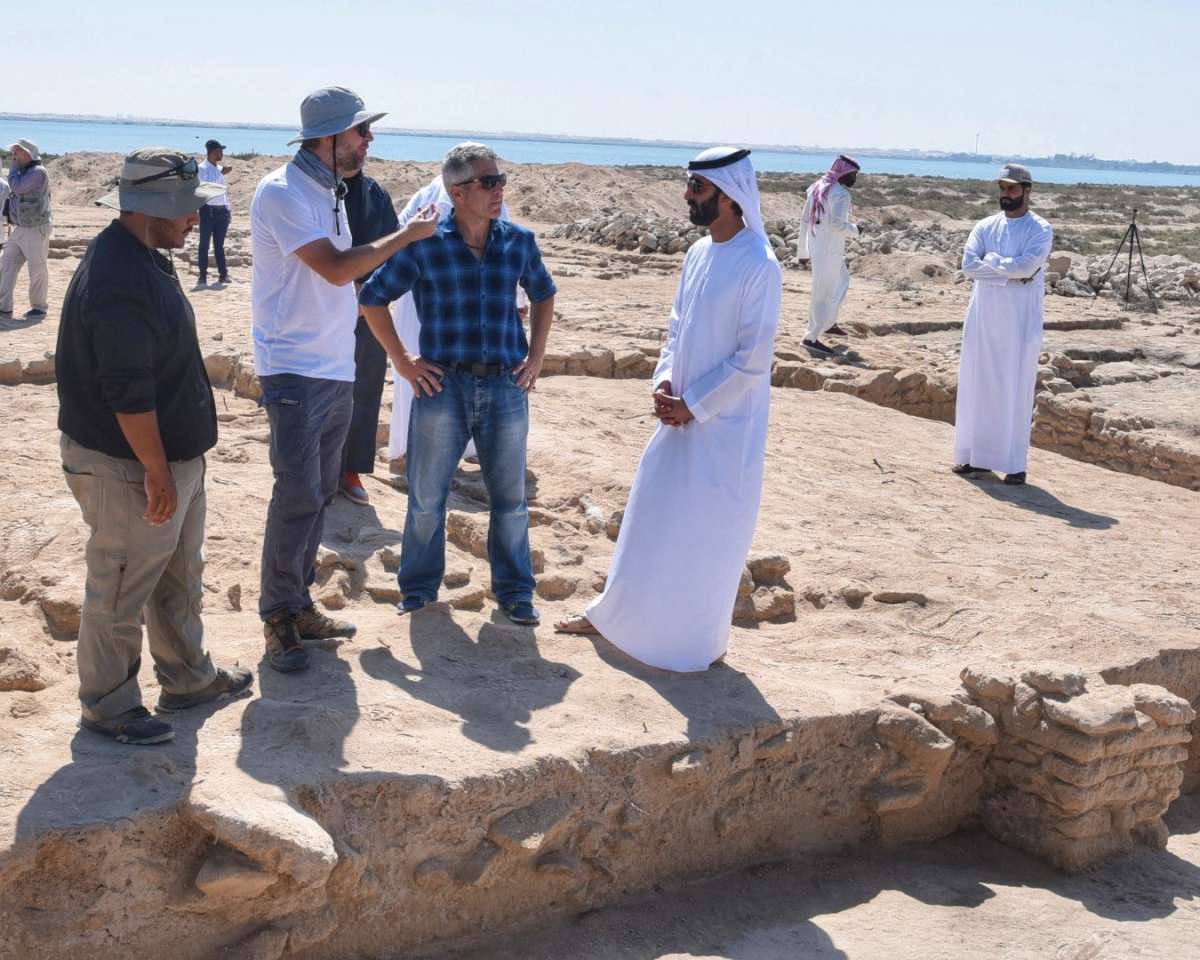The town is located near to the ancient Christian monastery (Siniya Monastery), which was discovered last year…reports Asian Lite News
The Umm Al Quwain Department of Tourism and Archaeology announced the latest developments in the archaeological excavation of Siniya island in its third season, indicating the existence of the oldest pearling town in the Arabian Gulf located on Siniya island, which flourished between the late 6th and mid-8th centuries AD.
The town is located near to the ancient Christian monastery (Siniya Monastery), which was discovered last year.
Sheikh Majid bin Saud bin Rashid Al Mualla, Chairman of Umm Al Quwain Department of Tourism and Archaeology, said, “this is a discovery of major significance for the history of Umm Al Quwain, the United Arab Emirates and the Arabian Gulf. Pearling has been an essential part of the livelihood and a fundamental component of the heritage for over 7,000 years. In addition, the Neolithic graves in Umm Al Quwain are known evidence of pearling.”
Rania Kannouma, Head of Archaeology section, explained that the Pearling city that was discovered on Siniya island covers an area of approximately 12 hectares, and it is a distinctive because it was discovered during the organised archaeological excavations at the 2023 excavation season.
The latest research and archaeological excavation show that this city is one of the largest surviving urbanised settlements ever found in the Emirates, comparable to the prosperity of medieval Julfar in Ras Al Khaimah. The city includes a large number of houses, which indicates the presence of thousands of residents who lived there at the time
In addition, discoveries confirm that those who lived at that time built their homes next to the pearl-hunting settlement as pearls were considered the main industry in the city as a result of the discovery of a large area of opened and discarded oyster shells opposite the city. In addition, a number of pearls were found during the excavations. It is also found the oldest “pearl diver’s weight” is dated more than a thousand and thirty years ago, that makes it clear evidence that pearl hunting was a major activity in the region.
During the excavation season, excavations revealed the existence of buildings in different design and architectural planning as some of them consist of one room and some of two rooms, as well as the discovery of other large buildings containing many rooms and separated by a number of indoor squares. The houses were built from local beach rocks and traditional materials from the surrounding environment and the roofs were made of palm trunks.
Research and excavation work on Siniya island will continue as it is an important project to study the history of the emirate in collaboration with the Ministry of Culture and Youth, UAE University, the Italian archaeological mission in Umm Al Quwain and Institute for the Study of the Ancient World at New York University.

Leave a Reply